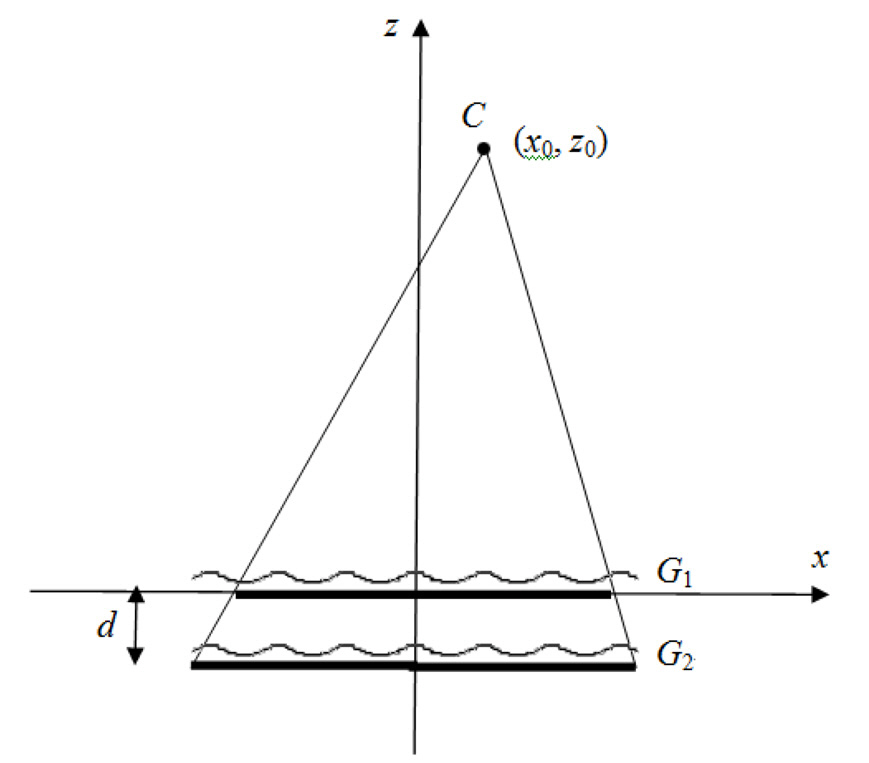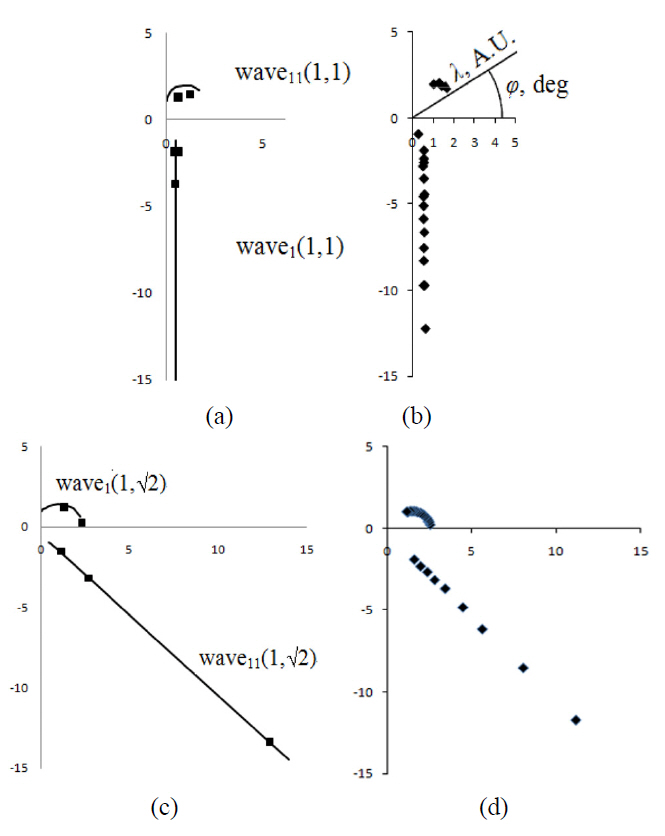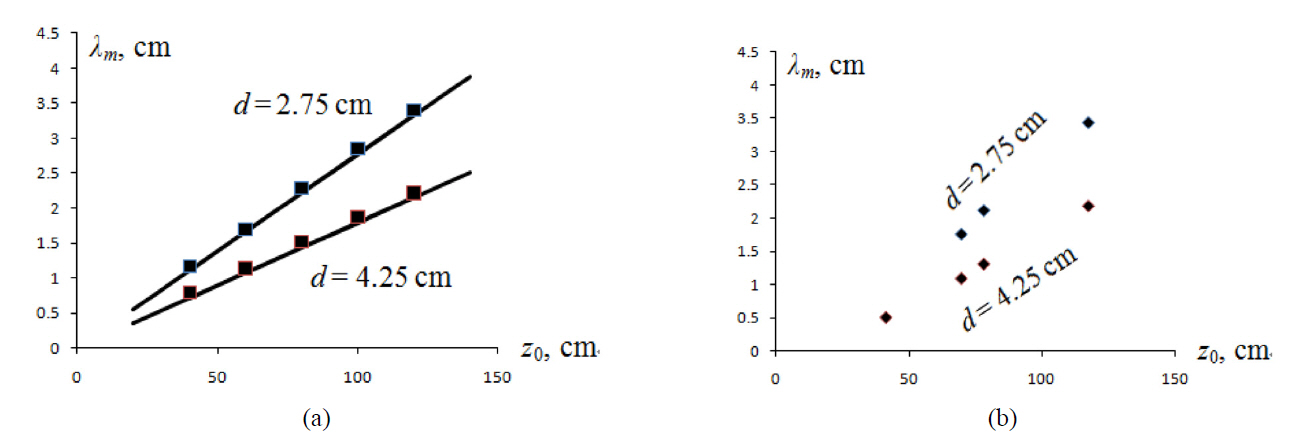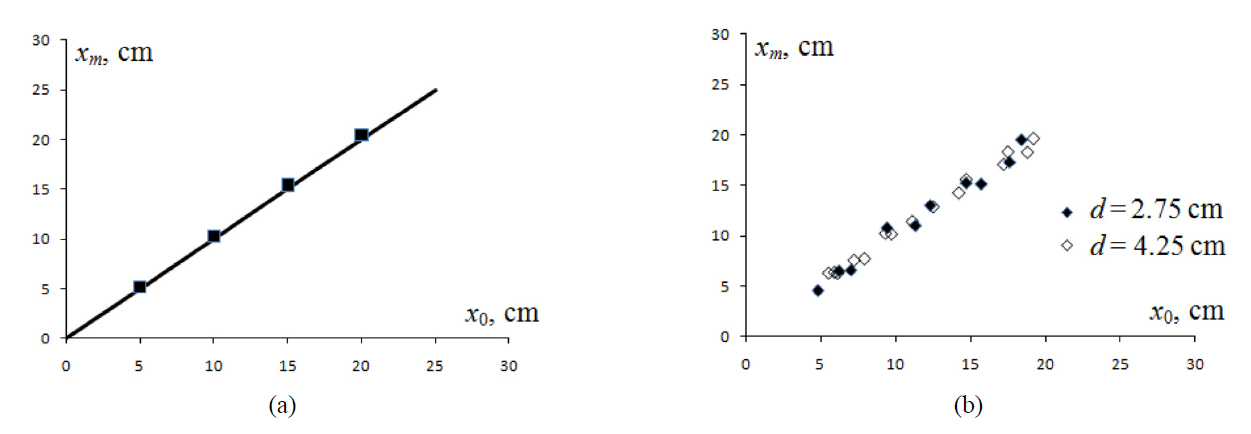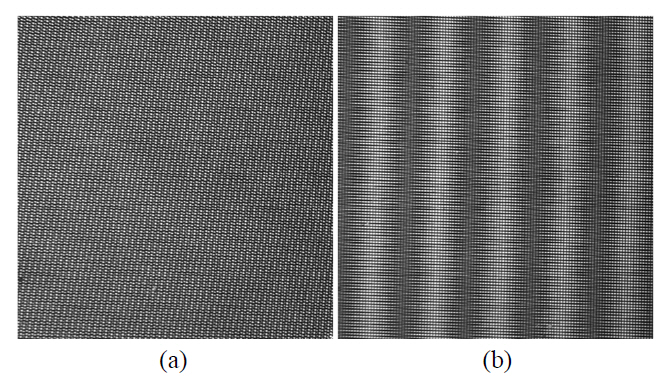



Theoretical and experimental investigations of moires in 3D displays were performed. To describe and minimize moires, we propose the polar representation form of moire waves. The experimental and theoretical data are in good agreement except in the neighborhood of the minimization angle. The implicit formulas are found for visible moires of line gratings at finite distances. The computer simulation and the physical experiments confirm the moire appearance for this case.
Recently many research studies appeared on the moire effect in 3D displays, see, e.g. [1]. Among them in particular,various techniques were proposed to reduce moires: using filters [2], finding an optimal angle in the general (blackand-white) case [3] and especially for color displays [1].
For visual displays, the simulation of moires is also important because it provides an estimation of how much it can affect the spatial visual perception. For this purpose,finite observer distance and non-coplanar gratings should be considered. Other researchers have done simulations and related calculations for various displays including the following factors: the crossing angle and the relative velocity [4], the orientation of the brightness enhancement film [5], the finite gap between layers [1], and the shape by shadow moire [6] where the location of an observer is important.
In this paper we describe a polar representation form for moire waves based on their wavelength and orientation.Section II was presented at the conference [7] where we basically introduced the polar form for moires. In additional,we found analytical expressions for visible moires for the case of line gratings and an observer at a finite distance.Also, we described the computer simulation and the physical experiments, and we discussed a probable visual effect of moires on displayed 3D images.
II. ORIENTATION AND POLAR FORM OF BASIC WAVES
In the case of rectangular gratings, we have found [3]the two basic moire waves giving the strongest visual effect
where
The optimal angle (which corresponds to minimized wavenumbers)is the root of the quartic equation for
The orientations of the basic waves can be obtained from Eq. (1) as follows,
The wavenumbers of the basic waves have been found before [3]:
The wavelength can be obtained from Eq. (3) as a reciprocal value
Under suitable conditions, one of the two generalized circles is a straight line, another is a circle. Namely, when
and when
A distinctive feature of the curves (4) ? (7) is their spatial separation. When 0<
In this section we describe how the moire patterns appear for an observer located at a finite distance. Two parallel plain layers of regular structure (gratings) with a non-zero distance between them were simulated. The gratings with cosinusoidal transparence functions were used. In this paper we only consider wavelength and phase with no respect to the amplitude; thus we assume the unit amplitude. The following are the equations of gratings 1 and 2 (see also Fig. 1),
With a finite distance to an observer, one of the gratings can play a role of the screen, while another is effectively projected onto this screen through the projection center at
Using the matrix M, the transformation of the first grating
The Eq. (10) describes the transformation of coordinates only. Other meaningful physical quantities like a wavenumber,phase, etc. should be derived from it. In this paper we consider the line gratings and therefore
Since we assume the original gratings to be symmetric functions in respect to the x-coordinate as defined in Eq.(8), the result of transformation by Eq. (10) (without a lateral displacement) is also symmetric and can be represented by another cosinusoiudal function with a different wavelength. Then the ratio of coordinates equals the ratio of periods of symmetric functions. In other words, when the second grating is located farther from the observer than the first grating (as shown in Fig. 1), the transformed(projected) wavelength is reduced as follows,
This yields the following expression for the transformed second grating with no lateral displacement:
If an observer displacement is non-zero,
In this case, the projected second grating is non-symmetric,and there appears a phase difference between it and the symmetric grating obtained above, Eq. (12). The dimensionless phase difference can be expressed in terms of the dimensionless period 2π and thus can be found as the ratio of the displacement Eq. (13) to the wavelength Eq. (11)with a proper coefficient,
The resulting equation for the transformed second grating with a lateral displacement looks like the following:
Formulas (8a) and (15) effectively represent the gratings in the same plane, where they can be easily superimposed.The period and phase of the visible moires can be found by known formulas [8]. In our notation, the formula (2.11)from [8] looks like
For the layout Fig. 1, the phase shift is zero, which means that the moire wave moves laterally in the same direction as the observer. From Eqs. (16) and (11), one can obtain the wavenumber
and the corresponding wavelength
The formula (18) shows that the wavelength of visible moire is
The phase of the visible moire can be found from phases of the superimposed gratings by the formula (7.25) from[8], which indicates that when one grating is moved by a certain part of its period, the moire is moved by the equal part of the moire period. (N.B. The movement takes place along the corresponding wavevector.) This means that in the case of the parallel gratings of equal period at nonzero distance, the visible displacement of moire fringes is equal to the lateral displacement of the observer,
On the other hand, in respect to the lateral displacements,it can be said that this formula also describes the behavior of an image of an observer reflected in a plain mirror installed at
When either of parallel line gratings is moved, the dimensionless phase of the visible moire is equal to the phase of the moved grating. Therefore the phase shift given by Eq. (14) can be included in the equation of the visible moire as follows:
Eq. (20) shows that in the asymmetric case (when
The preliminary simulation experiments were reported in[7]. In the current paper we present experiments of two kinds:the computer simulation and the physical experiments with real gratings when the gratings (ps-files for better accuracy)were installed between the covering glasses. The experimental setup is shown in Fig. 1. It includes the camera at
The experimental data, the simulation for (
It important that experimentally (i.e. only based on the measured wavelength and the angle) it is virtually impossible to distinguish between waves 1 and 11. As mentioned above,the distinctive feature of the curves in Fig. 3 is their separation. In particular, none of them crosses the boundary between half-planes. The wave 1 (1, √2) and wave 11 (1, 1) lie completely in the upper half-plane; whereas the wave 1 (1, 1) and wave 11 (1, √2) lie in the lower half-plane.
The simulation of finite-distance moires was implemented by using the two-dimensional Fourier transformation. The images of two properly scaled and displaced line gratings(as it is described analytically by Eqs. (8a) and (15)) were superimposed (multiplied). After the Fourier transformation,the higher spectral components were excluded by using the concept of the visibility circle [8]. Then, the inverse transformation results in the visible moire. In simulation, the distance and displacement of the observer were considered as given values whereas the wavelength and displacement of moires were resulting ones.
The results of this series of experiments are summarized in Figs. 4 and 5 as follows. The theoretical lines and simulations are shown in (a) while the results of the physical experiments with the real gratings are shown in (b). Fig. 4 shows the wavelength dependence on the observer distance.
Fig. 5 shows the visible displacement of moires as a function of the lateral displacement of the observer. The data in Figs. 4, 5 are given for two values of the gap between the gratings, 2.75 mm and 4.25 mm. It seems to be important that none of graphs in Fig. 5 depends on
The suggested polar form seems to be convenient in describing moires by lines or circles in the
However the angles in the neighborhood of the optimal angle [3] were not included in the current results. The higher frequency and lower contrast ratio made recognition of moire waves in this limited region very difficult. Therefore the direct measurements of wavelength and angle of moires were not made for the rotation angle between approxi
mately 23° and 35°, see Fig. 6 where the photographs of moires obtained in experiments with overlapped gratings are shown within the neighborhood of the optimal angle and outside it. This corresponds to the loss of accuracy observed in [7] for this neighborhood.
When the observer, e.g., approaches the display, the moirewavelength becomes shorter by Eq. (18), and more moire bands appear within the screen. In practice
The visible movement of moires does not follow a pattern for other objects normally displayed in a 3D display.Based on its motion parallax, the moire probably can be treated as lying in some plain behind the screen (though no other depth cue would confirm this). The visual behavior of moires for an observer approaching the screen may also be confusing, because the decreased wavelength can be sometimes treated as a more distant location. In this situation,the moire may seem to move away from the plane located by the motion parallax. Such ambiguous visual behavior might affect the other displayed objects and probably even disturb the stereoscopic perception.
The formulas for the period and phase of the visible moireare obtained for the case of two parallel line gratings. Both observer distance and the distance between plane gratings are finite and non-zero. The experimental graphs Figs. 4b,5b can fit the straight lines passing through the origin. The results of computer simulation correspond to the expression(19) for the visible moire wave. There is a good agreement between all three descriptions presented in this article: the theory, the computer simulation, and the physical experiments;it is within 2% - 3% for the theory and the physical experiment and less than 1% for the computer simulation.
